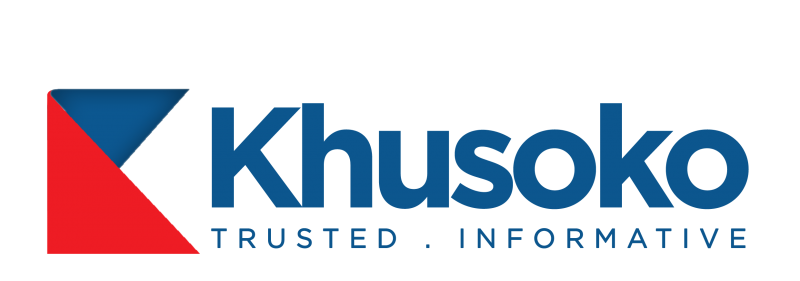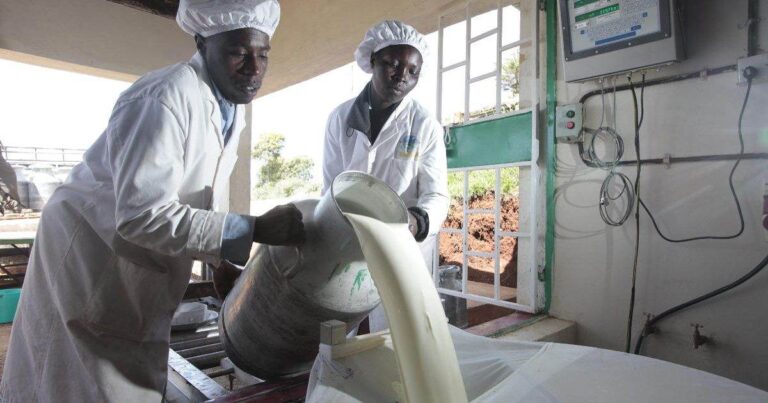Kenya’s dairy industry is projected to grow by 53% between 2023 and 2028, with an average annual growth rate of 10%.
This surge is expected to generate an additional Ksh 156 billion for farmers, according to a study by the Nourishing Prosperity Alliance: Forage for Animal Growth in East Africa
At the heart of this transformation is the NPA-Forage initiative, which is building a commercial marketplace for nutrient-rich, climate-resilient forage crops.
Ian Mutua Muthama, Country Lead Technical Manager at NPA-Forage, said the goal is to achieve 16% growth in 2024, 26% in 2025, and a total of 53% by 2028.
“Our impact will be measured through milk output per cow, farmer adoption of forage practices, and the economic gains realised by both farmers and forage suppliers,” Ian said.
Over the next three years, the program aims to reach 500,000 smallholder farmers, producing 3.4 billion litres of milk from 2 million dairy animals.
The Food and Agriculture Organisation (FAO) estimates that poor nutrition causes a milk deficit of about 4.42 billion litres annually, translating to lost revenue of Ksh 169 billion.
Brenda Rono, NPA-Forage’s Monitoring and Evaluation Lead, explained that these targets are rooted in solid data from the pilot phase (2020–2023).
“Farmers are now shifting to better feed practices and seeing real improvements in yields. We’re also training them in how to grow high-quality forage that meets both livestock needs and market demands.”
Since 2020, over 5,500 small-scale farmers have been trained under the program in forage production and efficient feeding methods.
Emerging opportunities in Kenya’s dairy industry
1. Demand
Kenyans consume about 120 litres of milk per person each year. With the population growing by 1.4% annually and urban areas expanding fast, demand for dairy is rising steadily.
The rising demand is being reflected in prices, which surged by 29.8% from KSh 5,083 in 2023 to KSh 6,600 per 100 litres in 2024, according to a 2025 Economic Survey by KNBS.
2. Value-added products
Processing milk into products like yoghurt, cheese, butter, and fortified drinks is becoming more popular.
Yoghurt alone has seen a 14% annual rise in consumption, driven by changing tastes and health awareness.
3. Export potential
Kenya’s dairy sector has room to grow beyond its borders, especially in neighbouring countries like Uganda, Tanzania, and South Sudan, and even in wider international markets.
4. Tech and innovation
Technologies such as automated milking, precision farming, and modern milk cooling are improving efficiency and quality. Digital tools like mobile apps are also helping farmers market their products and get paid faster and more securely.
5. Government backing
Initiatives like the Kenya Dairy Farming National Commercialisation Model aim to improve productivity, quality, and cooperative capacity among farmers.
Challenges in the sector
Inconsistent production & quality
Milk supply is unreliable due to disease, poor feeding, and climate change. Many small-scale farmers lack the equipment to meet processors’ quality standards.
Climate pressures
Droughts and erratic rainfall reduce feed availability, forcing farmers to buy expensive supplements and raising production costs.
Limited market access
Poor infrastructure and lack of market information keep many farmers out of formal value chains. Price swings, sometimes up to 30%, also cause unstable incomes.
Infrastructure gaps
Weak rural road networks, limited cold storage, and a lack of veterinary services continue to slow progress in modern dairy farming.
High operating costs
Farm inputs like feed and veterinary care are expensive, eating up to 70% of smallholders’ income and leaving little for reinvestment.
Animal health issues
Diseases such as mastitis reduce milk yield and increase costs. More vet access and farmer training are crucial for disease control.
Competition
Subsidised dairy imports from abroad make it tough for local farmers to compete. Boosting quality and efficiency is key to staying competitive.
Financing gaps
Most farmers lack access to affordable credit due to strict lending conditions and low financial literacy. This limits investment in better tools and systems.
Lack of market data
Without up-to-date information on prices and demand, many farmers end up selling their milk at poor rates. Reliable market insights could help improve incomes.
Strategic recommendations for sectoral transformation
To unlock Kenya’s full dairy potential, a multi-dimensional strategy is essential. K
Enhancing Production and Quality
- Genetic improvements: Promote artificial insemination and the use of high-yield dairy breeds.
- Cost-efficient feeding: Encourage on-farm fodder production and use of agricultural byproducts to reduce feed costs.
- Sustainable practices: Promote eco-friendly approaches such as rotational grazing and agroforestry to improve land use and resilience.
Strengthening farmer organisations and market access
- Empowering groups: Support the formation and capacity-building of dairy cooperatives to improve access to resources and markets.
- Capacity development: Provide training on cooperative management, hygiene standards, and efficient milk handling.
- Improved logistics: Enhance transportation and distribution networks while encouraging value addition to increase farmer incomes.
Investing in Infrastructure
- Cold chain development: Expand access to refrigeration and milk storage facilities to preserve quality and reduce spoilage.
- Upgrading roads: Improve rural road infrastructure to ease the transport of milk and inputs between farms and markets.
Promoting local consumption and quality assurance
- Public awareness: Initiate campaigns to boost milk consumption in schools, health facilities, and urban markets.
- Regulatory strengthening: Enforce quality standards and food safety regulations to build consumer confidence and protect public health.




